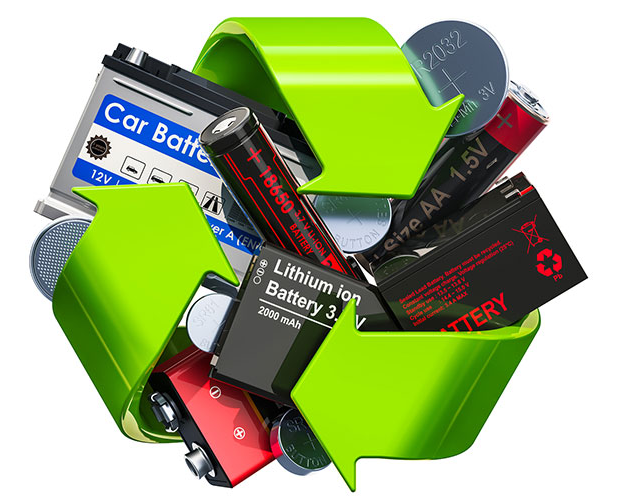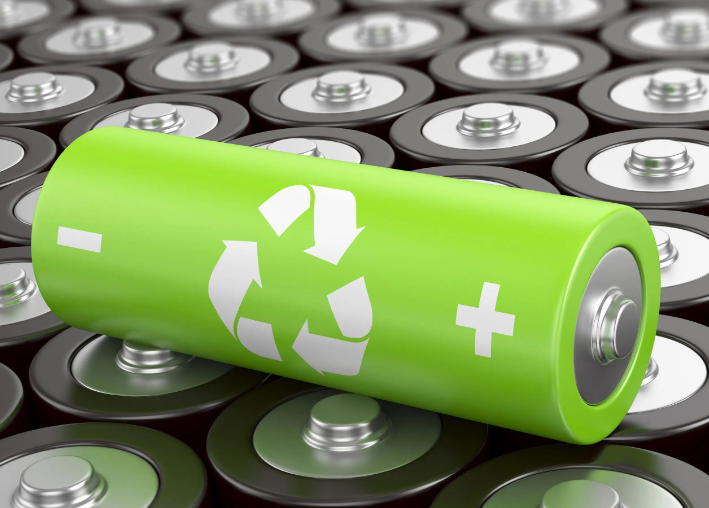The six types of hydrometallurgy include atmospheric leaching, pressure leaching, solvent extraction, precipitation, electrowinning and electrorefining, each utilizing different chemistries and equipment to efficiently recover and refine metals.
Atmospheric pressure leaching
Atmospheric pressure leaching is a cost-effective method for extracting metals from ores without the need for complex equipment. This environmental method promotes chemical reactions that dissolve the target metal into an aqueous solution through agitation. Typically, sulfuric acid is used to leach the valuable component when extracting copper from chalcopyrite.
Factors that influence this process include temperature, which typically ranges from comfortable to warm, as heating accelerates kinetics by increasing reaction rates. Solution chemistry can also significantly affect solubility, with zinc and nickel favoring acidic environments for dissolution, for example. Enhancing oxidation with oxygen or hydrogen peroxide can similarly stimulate metal decomposition, particularly for sulfide minerals.
Applications involve the recovery of copper, gold, zinc, and nickel. The main advantages of the process are its simplicity and reduced energy requirements relative to pressurized alternatives, which is particularly useful for marginal deposits where other extraction routes may otherwise be uneconomical.
However, disadvantages include slower reaction kinetics and reduced recovery efficiency compared to high-pressure techniques. Therefore, close control and optimization of leachate formulations are essential to maximize recovery by maintaining reaction determinants.
Pressure leaching
Atmospheric pressure leaching is a cost-effective method for extracting metals from ores without the need for complex equipment. This environmental method promotes chemical reactions that dissolve the target metal into an aqueous solution through agitation. Typically, sulfuric acid is used to leach the valuable component when extracting copper from chalcopyrite.
Factors that influence this process include temperature, which typically ranges from comfortable to warm, as heating accelerates kinetics by increasing reaction rates. Solution chemistry can also significantly affect solubility, with zinc and nickel favoring acidic environments for dissolution, for example. Enhancing oxidation with oxygen or hydrogen peroxide can similarly stimulate metal decomposition, particularly for sulfide minerals.
Applications involve the recovery of copper, gold, zinc, and nickel. The main advantages of the process are its simplicity and reduced energy requirements relative to pressurized alternatives, which is particularly useful for marginal deposits where other extraction routes may otherwise be uneconomical.
However, disadvantages include slower reaction kinetics and reduced recovery efficiency compared to high-pressure techniques. Therefore, close control and optimization of leachate formulations are essential to maximize recovery by maintaining reaction determinants.
Solvent extraction
Solvent extraction, also known as liquid-liquid extraction, is a comprehensive technique used in hydrometallurgy to separate and purify metals from aqueous solutions. The process exploits the different solubility of compounds in two immiscible liquids, typically involving an organic solvent and an aqueous solution.
Process Overview
The operation begins with two phases: an aqueous phase containing dissolved metal ions and an organic phase comprising a solvent specific for the target metal. When the two are combined, the metal ions are transferred from the aqueous phase to the organic phase based on their relative affinities. After separation, the organic phase is back-extracted with a solution of a suitable reagent to recover the metal.
Key Variables
- Solvent Selection: It is critical to select an appropriate organic solvent that is both efficient in extracting the desired metal and well isolated from impurities.
- pH Control: The pH of the aqueous phase is carefully adjusted to optimize metal recovery. For example, adjusting the pH can significantly increase the selectivity of copper over iron.
- Ratio: The ratio of the organic phase to the aqueous phase affects the extraction efficiency and is optimized based on the specific metal and solvent used.
Applications and Benefits
The process is widely used to recover rare earth elements, uranium, and base metals such as copper and nickel. It is highly selective and efficient, capable of processing low-grade ores and recycling electronic waste. When conditions are optimized, the process can achieve excellent results while minimizing metal residues.
Challenges and Considerations
Despite its many advantages, solvent extraction requires careful handling of hazardous chemicals and waste solvents. The environmental impact of solvent handling and the need for effective recovery protocols are significant issues. Cost and production must be balanced to ensure economic viability.
Economic and Efficiency Aspects
Under optimized conditions, solvent extraction can achieve metal recovery efficiencies of over 99%, significantly reducing the amount of residual metals in the waste stream. From an economic perspective, the process can be adjusted to balance operating costs and output, making it a versatile tool for metal recovery if used wisely.

Precipitation
Precipitation in hydrometallurgy is a critical process used to recover metals from solution by converting them into solid compounds. This method is employed after leaching or solvent extraction to isolate and purify specific metals by inducing their precipitation as oxides, hydroxides, sulfides, or other salts.
Process Overview
The process begins by adjusting the chemical environment of a metal-bearing solution to trigger the formation of solid particles. This is often achieved by altering the pH, introducing a precipitating agent, or changing the temperature. For instance, to precipitate gold from a solution, zinc dust is often added, leading to the formation of gold particles through a replacement reaction.
Key Variables
- Precipitating Agent: The choice of agent is crucial and depends on the specific metal. Common agents include lime for nickel or copper, and sodium sulfide for precipitating heavy metals like lead and zinc.
- Concentration and pH: The concentration of the metal and the pH of the solution are adjusted to optimal levels to ensure maximum precipitation efficiency.
- Temperature: Modulating the temperature can enhance the kinetics of the precipitation process, influencing the size and purity of the precipitate.
Applications and Advantages
This technique is widely used in the recovery of precious metals, rare earth elements, and non-ferrous metals. It provides a cost-effective and straightforward method to purify and concentrate metals from large volumes of solution.
Challenges and Considerations
The main challenge in precipitation is controlling the quality and morphology of the precipitate, which can significantly affect subsequent processing stages like smelting or refining. Proper disposal of the leftover solutions and ensuring environmental compliance are also critical.
Efficiency Metrics
Precipitation processes can achieve recovery rates of over 90% for some metals under optimized conditions. This high efficiency not only maximizes metal yield but also minimizes waste, contributing to more sustainable metallurgical operations.

Electrolytic deposition
Electrolytic deposition, commonly referred to as electroplating or electrodeposition, is a sophisticated hydrometallurgical process that involves the reduction of metal ions from a solution to form a coherent metal coating on a cathode. This method is widely used for the purification of metals and the manufacturing of high-quality, fine metal products.
Process Overview
The process involves passing a direct current between two electrodes immersed in an electrolytic solution—the anode and the cathode. Metal ions from the solution are reduced at the cathode, depositing a thin layer of metal. For example, in copper refining, impure copper acts as the anode, with pure copper plates serving as the cathode.
Key Variables
- Current Density: The amount of electric current per unit area of the cathode affects the rate of deposition and the quality of the metal layer. Optimal current density ensures uniform deposition without defects.
- Electrolyte Composition: The type and concentration of the metal ions in the electrolyte must be carefully controlled to achieve desired deposition characteristics.
- Voltage and Temperature: These parameters must be optimized to enhance the efficiency of the ion reduction and the quality of the metal deposit.
Applications and Advantages
Electrolytic deposition is crucial for industries requiring precise metal coatings, including electronics, automotive, and aerospace. It allows for the application of metals like gold, silver, zinc, and copper onto various substrates, providing durability, corrosion resistance, and electrical conductivity.
Challenges and Considerations
The precision required in controlling process parameters can lead to complexities in industrial applications. Additionally, the disposal of used electrolytes and maintenance of the plating equipment pose environmental and safety challenges.
Efficiency Metrics
This method can achieve metal recovery efficiencies nearing 99% under well-controlled conditions, with deposition rates that can be finely tuned according to the application’s needs.
Electrolytic Refining
Electrolytic purification is a strict and regulated strategy used to refine metals, especially copper, silver and gold. This method improves the purity of the material by using an electrolytic cell, where the impure metal is dissolved from the anode and deposited in a refined state on the cathode.
Process Overview
In this system, the impure metal forms the anode, while a clean piece of metal acts as the cathode. An electrolyte solution contains dissolved ions of the metal to be refined, which facilitates the flow of current. When the power is applied, the impure metal in the anode dissolves into the electrolyte and is transported and deposited in a pure form on the cathode.
Key Variables
- Electrolyte Composition: The choice of electrolyte is critical to the efficiency of ion transport and metal deposition, and the choice of electrolyte fluctuates depending on the metal to be refined.
- Current Density and Voltage: These parameters are carefully controlled to optimize the deposition rate and ensure the purity of the metal.
- Temperature: Maintaining the optimal temperature is critical to maximizing the efficiency of the electrochemical reaction.
Applications and Benefits
Electrolytic purification is an integral part of industries that require high-purity metals. It is particularly beneficial for electrical applications, where metal purity is critical for conductivity and performance.
Challenges and Considerations
The main challenges with electrolytic purification are the energy costs associated with the process, and the management of byproducts, which can include toxic metals and gases.
Efficacy Metrics
The process is capable of producing metals with a purity of 99.99%, with efficiency depending on the specific setup and conditions. For example, in copper refining, the process routinely achieves purity levels of 99.9%, which is critical for wire applications.
